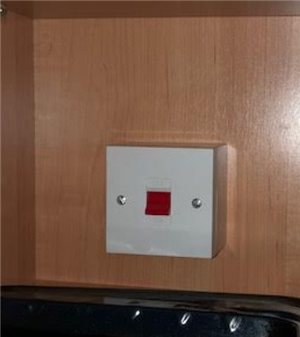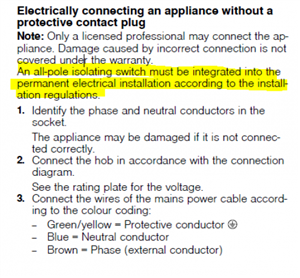Hello, I googled and found some info in the old IET forums, which has generated this post.
We need to replace our double oven. For the last 20 years, a 30A trip fuse has provided power to a dual wall socket (kettle 2.2kw, microwave 1.29kw) and the oven with a 5.1kw max rated power consumption. I've discovered this by tripping the 30A fuses in the fuse box to see which appliances were still live.
It appears that when the kitchen was fitted (20 years ago), the original standalone cooker on/off master switch was converted to a dual wall socket and the then a spur used for the double oven.
According to my maths this is a total of 35.79A @ 240v which is more than 30A, although I'm guessing the times all three appliances have been on at the same time would be infrequent.
| Appliance | Load rating (kw) | Amps (at 240v) |
| Current oven | 5.1 | 21.25 |
| Kettle | 2.2 | 9.166666667 |
| Microwave | 1.29 | 5.375 |
| total | 8.59 | 35.79166667 |
Why has the 30A RCD at the fusebox not tripped when they have been on at the same time?
The new oven has a load rating of 6.2kw. This increases the total amps to just over 40A.
| Appliance | Load rating (kw) | Amps (at 240v) |
| New oven | 6.2 | 25.83333333 |
| Kettle | 2.2 | 9.166666667 |
| Microwave | 1.29 | 5.375 |
| total | 9.69 | 40.375 |
I'm guessing this may cause some issues with the 30A feed. Would a more modern 32A be better?
I suppose I could always move the kettle and microwave to other sockets in the kitchen which are on a different 30A circuit.
Please could I have your comments?
Thank you
Paul

